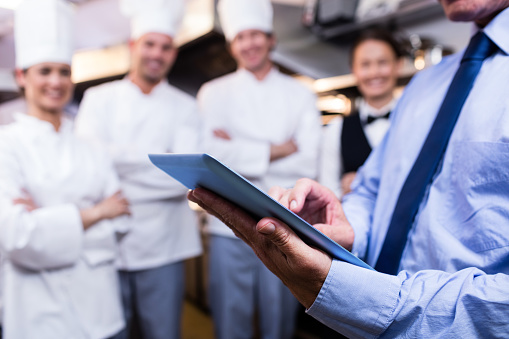
A constantly developing enterprise and customers are propelling the expansion of new restaurant technology and hardware. Restaurant proprietors can take the edge of numerous management resolutions to enhance the ability of their day-to-day functions and associations with consumers.
Find out what restaurant technologies you need to run your company more virtually, satisfy your visitors, and begin the technology trajectory, whether you are an earlier adopter or just signing up for the tech round.
Top Technology and Hardware for Restaurants
Rising numerals of restaurants are embracing technology at a fast pace, and entrepreneurs are increasingly attempting to make their companies more digital. With the recent challenges encountered by the restaurant initiative, the main chains are presenting tech-based resolutions to solve their workforce deficiency and margin decline issues.
Their measure to catch the awareness of customers with a refined understanding of technology-led them to set new service averages. Find out what the top technology must-haves are today to contest.
Self-Serving Kiosks
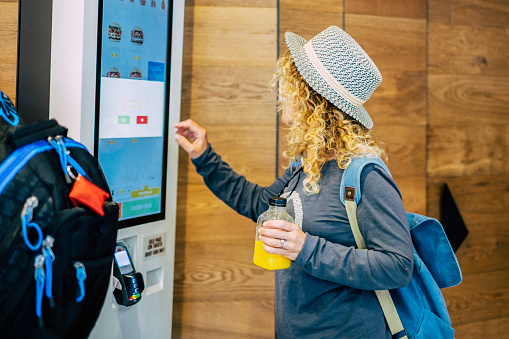
If you’ve been to your regional restaurant chain already, you’ve likely witnessed how much better the ordering procedure is since these free-standing collections have been enforced. In fast service and quick-offhand restaurants, self-service kiosks are evolving into a significant aspect of the procedure. 53% of guests interviewed conveyed and communicated how critical self-service kiosks are to their general dining venture in the 2019 Restaurant Success Report.
Card readers are established in these kiosks, which can be utilised to accept payments by debit and credit cards. Cash fees are also authorised by printing a receipt at the counter that the shopper can present. By revving service and declining order errors generated by miscommunication, these terminals enhance the guest’s background. Order management systems are key to your restaurant business operating smoothly.
For numerous reasons, self-serve kiosks are evolving into becoming more and more favoured. The restaurant’s digital background is unique, its interface is straightforward to use, and they enable the consumer’s venture. This authorises visitors to take possession of their demands by checking their menu and adapting it to suit their requirements.
An appropriately designed kiosk can enhance the guest experience while also increasing average check size, upselling opportunities, and volume of orders, all while reducing the need for additional staff.
Contactless and Tableside Order and Pay
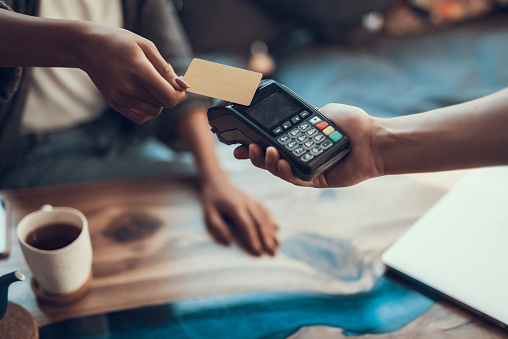
Diners have always desired their dining occasion to be safe, active, and quick. Since COVID-19, they have evolved even more crucial than ever. The opportunity for contactless and mobile payments has evolved into a significant factor in the dining occasion for many trendy diners. Some consumers feel that tableside technology is critical to their dining experiences.
Expanding attention and apprehension over disease transmission has been a significant driving force in the execution of existing technologies; these contain contactless, EMV, tap and pay, tableside ordering, and mobile wallets. Each of these circumstances greatly lessens the opportunity of passing the virus and transmitting them to another.
The restaurant enterprise has been utilising most of these technologies for years but has been slow in embracing them. The amenity and security of the contactless and tableside technologies permit your visitors to pay and order with the ease and convenience of their own devices. In addition to enhancing your guests’ experience, it also helps you quicken up service, cut labour costs, and gain a more in-depth knowledge of your guests.
With COVID-19, this will evolve into a condition and no longer be optional. Companies that don’t adopt and enable contactless payments will find themselves languishing in their operations-technology industries.
Modern POS
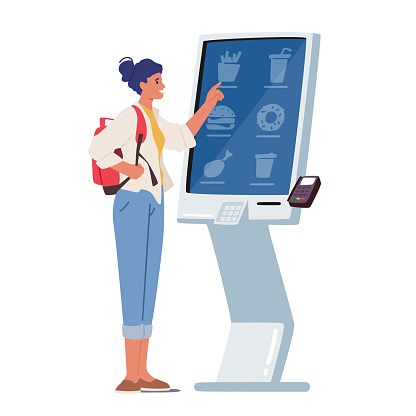
Technology like touchscreen terminals for restaurant POS is unrestricted to make the procedure more active. With stable hardware, they should tolerate the needs of a restaurant atmosphere while letting you and your teamwork at a restaurant rate. This is where order management systems come into play.
A POS system can facilitate the accounting revolution, make past trades efficiently available, speed up service, and provide precise enumerated receipts. It also decreases blunders made by purchasers and has a more inferior rehabilitation cost than a cash register.
There are multiple touchscreen terminals open, and POS software that is created for restaurant use often contains a straightforward, purchaser-friendly interface, so new workers can efficiently learn. In addition to positioning more orders quicker, touchscreen POS terminals grow revenue by facilitating order taking.
Anti-bacterial point of sale procedures is also evolving into becoming more widespread. To contain the pass-on of the virus as well as to provide that workers are satisfied, you should think about antimicrobial POS screens and improved cleaning methods. It might also be the momentum required for technologists to create voice-activated arrangements further and ultimately totally do away with the demand for touch screens at POS points of sale.
Momentarily, traditional POS management procedures will be substituted by cloud-based software that supplies users with admission to their data anywhere, anytime. Network-connected methods eradicate the need to establish standard terminals, a procedure that can sometimes be disconnected.
The functionality allows you to synchronize gear such as smartphones, tablets, and kitchen printers. Moreover, cloud-based explanations are not only less pricey, but also contain refined functionality and reporting mechanisms that can help you to better control your company. Most restaurant POS systems today feature customer-facing displays, which let consumers see the order, pay fast, and tip on the screen whilst they are composing. Keeping your line moving is more leisurely with this method since the precision and pace of demands are enhanced.
Handheld POS Software and Device
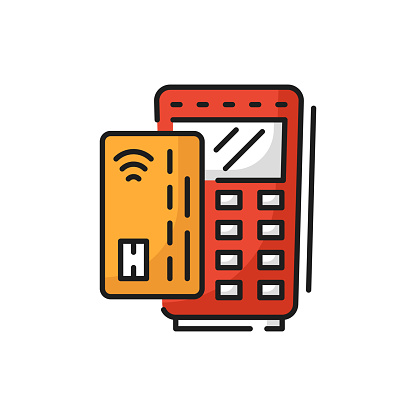
It would be fortunate if servers could complete a check with a single stay, rather than halting at four tables: asking whether visitors are ready for a check, obtaining their check, showing it to the POS, and yielding cash shift. By utilising handheld POS systems, your staff can facilitate processes by letting visitors place orders and pay at the table.
With handheld POS methods, waitpeople can better handle their workload and turntables quickly since they can make orders and pay at the table. Consumer wait times are decreased as well. Also, it allows you to achieve a more significant number of orders and serve more consumers in one shift. Letting servers complete commerce at the table decreases the time and ability to pick up a credit card payment, process it at the register, return the receipt, and organise a signature for authorization.
In addition to transmitting digital orders straight to the kitchen, servers can now operate portable devices to take orders. By utilising these functions, waiters can deliver faster, more individualized service while at the same time enduring various tables at once. These devices supply your workers with the capability to form a more impressive visitor venture further enhancing functional ability. In what way? They can spend more time amusing visitors since they don’t have to recall orders or run back and forth to your POS.
Kitchen Display Screen and System
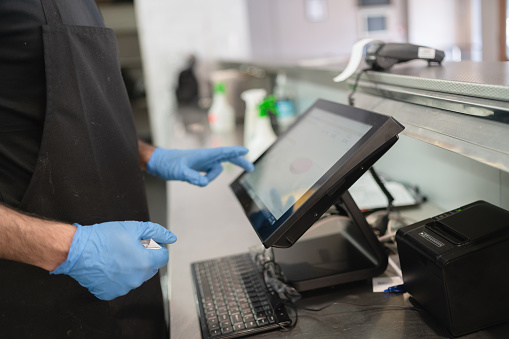
As part of driving through innovative restaurant technology, more and more restaurants are using kitchen display systems (KDS) to keep kitchen functions running smoothly as well as restaurant functions available.
The KDS displays orders obtained via a POS. With a KDS, you can get rid of your paper tickets and printer and use its digital order observer. Likewise, it will tolerate food routing, recipe archiving, and hold essential kitchen details. Among its many advantages is the ability to manage the back end of your company, boost ability, decrease ticket times, and boost the rate of the food. Order management systems will keep you sane when it comes to these sort of aspects in you restaurant.
The KDS system is environmentally sound, as it is 100% digital, unlike standard ticket printers. Restaurants also preserve a diminutive portion of money on the ticket paper, which is an extra cost or deals with losing tickets or tainted paper. All open orders can be considered on one screen, either on a wall-mounted display or a counter-top display. By maintaining the kitchen on track and on the program, the front-of-house can also function without interruption.
Inventory Management System

Using this resolution, you’ll be capable to handle inventory in your restaurant along with other technologies. It will enable restaurateurs to plan their menus, track their food usage, select food costs, track food waste, and estimate COGS. Waste, theft, spoilage, and overproduction can all be handled with this resolution.
Inventory management software also allows you to preserve consistent precision in your inventory. Utilizing your current inventory takings, you automatically revamp the current level of your storage. This shows you a grand idea of how multiple ingredients you’re operating, which you can then reach to how many food items you’re marketing. That’ll be your restaurant’s contest. Some even have an accompanying restaurant inventory app so you can review levels from home.
It is no mystery that restaurant inventory management is a critical part of running a thriving restaurant business. Yet, it is powerless to count without inventory management software. Manually counting. A counting process that is inclined to blunders and could be formidable.
This can be automated entirely with restaurant inventory management software. Your cache is examined rather than you having to mark each item down by hand. Inventory levels are automatically revamped by the software.
Kitchen Printers
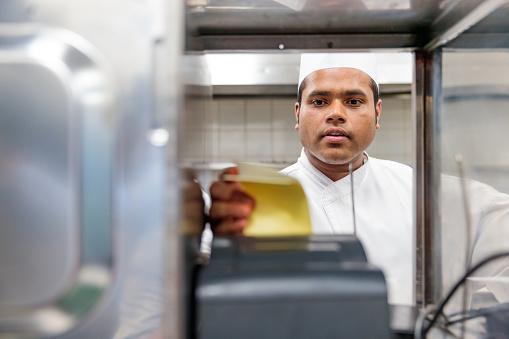
Despite the favour of digital receipts and kitchen display screens, numerous restaurants still favour paper receipts, particularly those in full-service facilities. A thermal printer is needed to print receipts on paper. If an enterprise desires to preserve a paper trail, it can have receipt printers established for the front and back of the house. A thermal printer prints a receipt without using ink because it uses heat to print characters.
Typically, these printers are found in check-out areas preferably than the kitchen, due to their high heat sensitiveness. The kitchen staff generally prefers ink-based mark printers that make a sound when they print, so they know when new orders are open.
Here’s a look at the most familiar kinds of printers you can use at a restaurant.
Thermal Printers
Due to their calm nature and quicker printing speed, thermal printers are utilised mainly by front-of-house staff. These are no ink-based receipt printers. The paper is instead heated to make characters and ideas.
Kitchen Printers
Kitchen printers normally use ink or influence technology. During active times, back-of-house personnel might not detect the new order slip as it occurs in the printer. In circumstances like this, mark printers help since they have a more audible printing method that catches the eye of chefs and cooks. In addition to printing in varied colours, it can also be emphasised with distinct colours, such as red or black.
Cash Drawers and Registers
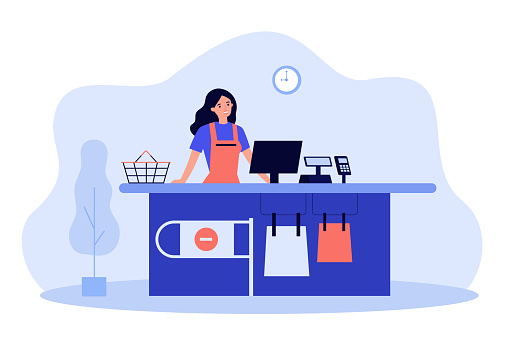
Despite advancements in POS technology, the traditional cash drawer persists to be a tack for cash management and storage.
Statistica indicated that there are still a lot of customers who choose to pay with cash. To guarantee security, restaurants should maintain a cash drawer on hand. Hardware like this is consistent with favoured point-of-sale systems, authorising the tracking of cash payments and documenting portions into a database. To maintain your cash drawer’s safety, you should also lock it by the end of your procedure for a day and regularly unload it.
Online Ordering and Delivery Solutions

The comfort of online ordering has pushed its favour to skyrocket. The number of food orders put online or via an app is continuously rising. As a part of their growth methods, even fast-food chains and fast-casual restaurants operate spirit kitchens. You could learn how to make your own app as well as well as considering custom mobile app development, as people to tend to sometimes order straight from the restaurant’s app.
Having a food delivery choice saves on costs combined with dining-in restaurants as well as fulfilling the needs of the operating customer. Restaurants were already utilising online ordering and off-premise dining well before the COVID-19 problem began. Furthermore, after the pandemic outbreak, restaurants have increasingly depended on off-premises dining choices such as takeout and delivery to endure.
Online ordering resolutions can provide a lot of uses, but visitors commonly choose to place their orders instantly with restaurants (consider order management systems). As demonstrated by research, a restaurant’s off-premises system will stay a vital element of its forthcoming process indefinitely.
Customer Support Technology

In living restaurants, chatbots supply consumers with a tailored venture, whether they need to secure tables, create online orders, or answer FAQs around the clock. Chatbots may interact with consumers in the subsequent ways:
- Fill up suggestions
- Recommendations for associating food and drink
- Payment clarification
- Get a response from your gathering
- Occasion news
- Manage and present upgrades
Restaurant workers can utilise chatbots to free up their time, while visitors will appreciate a better dining experience. For a chatbot to be a sensation, it is significant to choose whether your consumers are excited about utilising this technology and which venues they choose to use.
How To Implement Restaurant Technology
To strengthen consumer loyalty, deals, and traffic, it is crucial to adapt to current technology. You can begin executing technology in their interaction with four easy steps if you are in the restaurant enterprise.
- Discovering answers that fit the restaurant’s requirements – Managing should investigate what resolutions are most suitable for its needs after deciding which areas could be enhanced. To evade any problems with the forthcoming performance of technology, staff should be made conscious of it in advance. While technology can decipher any restaurant’s concerns, it should also maximize the ability and stay within the funding.
- Collect a team of committed professionals – One or two members can be allocated to the scheme to create an undertaking team. It will also take care of the organisational work, contact, and help to pick involved in enforcing new software. It will be easier and more straightforward for workers to learn new software if it is designed suitably for unification.
- Create and run a test schedule to pinpoint errors – Before readying workers, the administration can check for bugs or technical hardships by enforcing a pilot program. During pilots, employees can also learn a method well enough so they can display it to others.
Following your approval of the solution, the project team will move on to the implementation phase.
Educate and train the entire staff about the new software, system, or tool
Management can begin extensive training employees once new hardware and software have been installed. In addition, good training should solicit feedback and ensure that all participants understand what they are learning.
Every function should be explained to employees so that they comprehend how it works, why it is important, and how it impacts workflow.facebook twitter email
Conclusion
Smarty Studio has guides like this that can help you with your restaurant business/chain for the upcoming future. This blog should help with what you can do to modernize your restaurant, and how you can aid your consumers into ordering food with having new machinery in place.

